Varieties of aralia and its cultivation
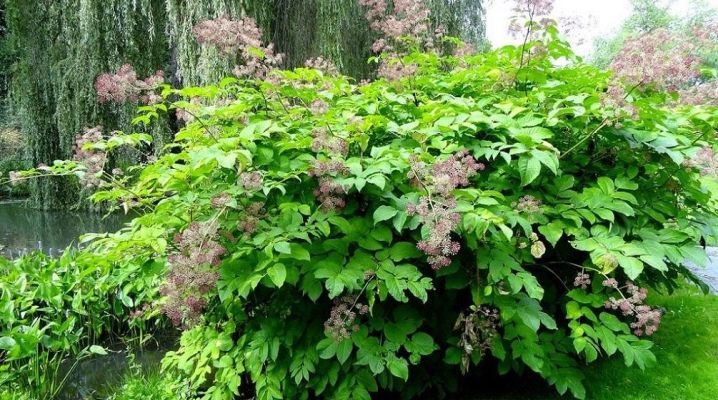
The blooming culture of Aralia is native to the subtropics. But in our area it is known as the Manchurian aralia or the devil's tree. We will talk about the features of an unusual shrub, its varieties and methods of care in the article.
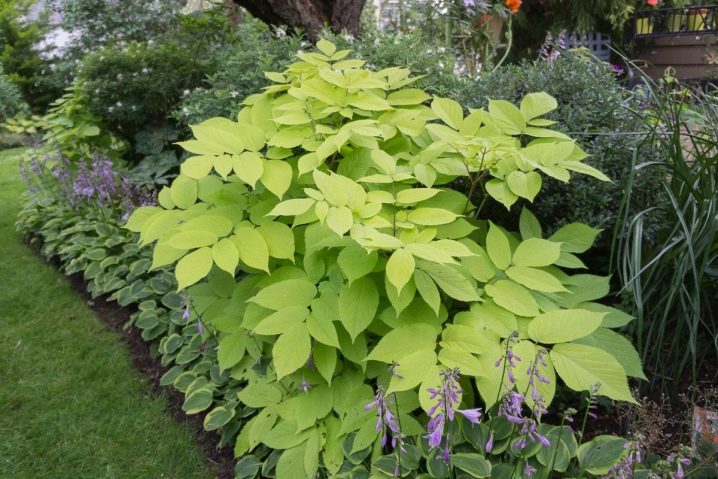
general description
Aralia in its native area can reach large sizes - more than 15 meters. But in our latitudes, its height is much more modest - an ordinary shrub from 1.5 to 7-8 meters... Interestingly, strong branching in the shrub is noted at a height of 2 to 5 meters. With age, the trunk of the plant becomes covered with sharp and long thorns, which are also located on the petioles of the leaves, which is why it is sometimes called the devil's tree.
The roots of the shrub are located at the surface of the earth. With a superficial root system, the roots lie at a depth of 15 to 25 centimeters. At the same time, the roots are very vulnerable and fragile. This fact should be taken into account when caring for a crop. Under natural conditions, aralia grows with a lush palm-type crown, without layers and shoots. The trees are not branched.
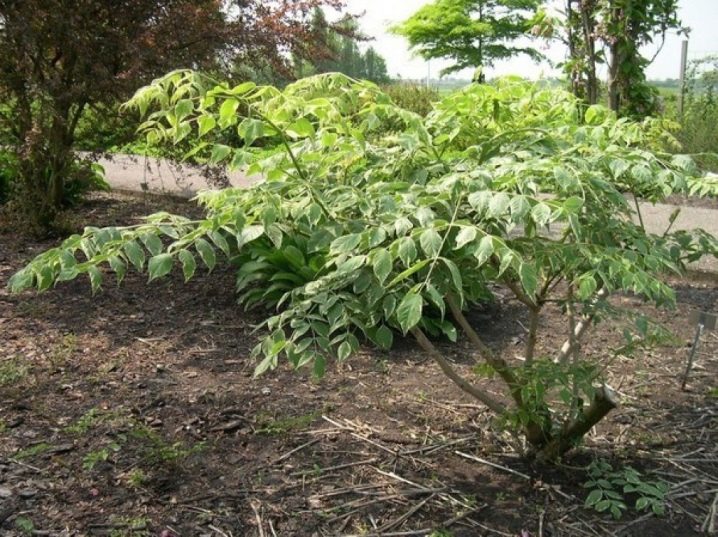
The leaf plates are pinnate, large, elongated. Throughout the spring and summer period, the leaves are dark green, and with the onset of autumn cold weather, they change their color to dark purple, red, yellow.
Inflorescences are medium, up to 40 centimeters in length, decorated in a panicle. And the branches of the panicle look like a kind of flower umbrellas. You can often see flocks of bees around the trees, because aralia is a honey tree. In more northern latitudes, flowering occurs in August, but at home it can bloom from the beginning of June.
After flowering, ball-shaped fruits of dark blue color with five seeds inside are tied. As they ripen with the first breath of the breeze, the berries fall off. Seeds up to 2 millimeters long and up to 2.5 millimeters wide. There are about 1000 of them tied with an average weight of up to 0.9 grams. But the seed never fully matures.
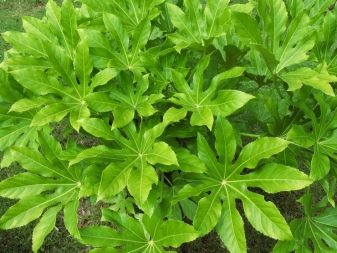
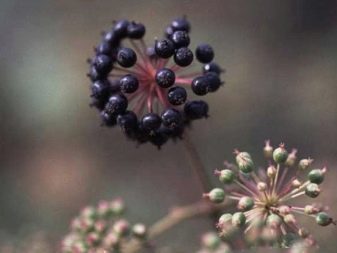
The name of the plant was invented by the natives of North America. This is one of the species of the Araliaceae family, which includes more than 30 species. Culture growing area - Malaysia, Asia, North America, Australia. One of the most common botanical cousins is the Manchurian Aralia, which grows almost everywhere in Russia.
On the territory of the Russian Federation, Aralia grows in mixed forests, on forest edges, in felling areas, in clearings, and is successfully cultivated in parks, city gardens, in public gardens.
The winter hardiness of the culture is average: it often freezes over, but departs well. It is undemanding to moisture, soil, care. Saplings take root easily. The growth is intensive, the average life span of a tree is up to 25 years.
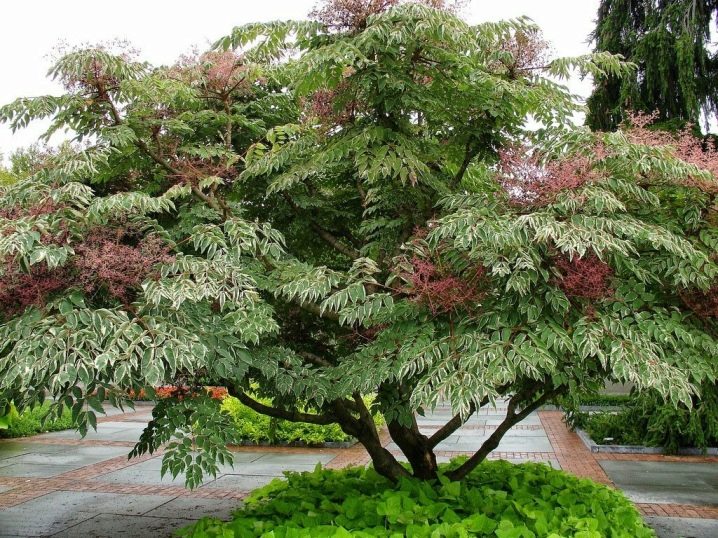
Types and varieties
This tree has more than 30 varieties. Let's take a look at some of them.
The most prominent representative in this family is considered Aralia Manchu or high, Far Eastern. Differs in rare inflorescences, wide leaf plates. The homeland of the shrub is the Far East, as well as Japan, Korea, China. Grows mainly in groups at the edges of mixed forests. Differs in active growth, height up to 5 meters. Inflorescences are small, compact. Blooms with pink, purple or yellow umbrellas.

Heart-shaped or Schmidt. The growing area is the Far East. It is a herbaceous perennial up to 2 meters in height. Flowers are yellow or greenish in color, collected in small umbrellas.It grows on mountain slopes, flowering from June to September, and harvesting from August to September, respectively.
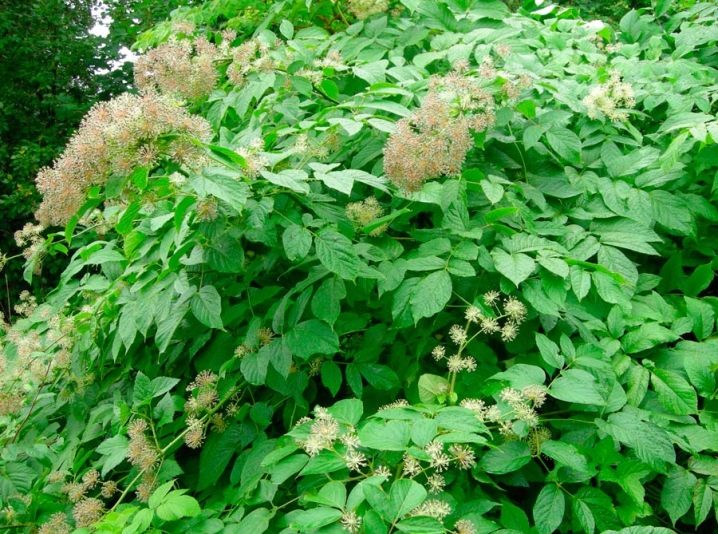
Aralia prickly originally from North America, where it can be seen along the river banks. This is a tall tree up to 15 meters high, flowering and fruiting begins at the age of 6.
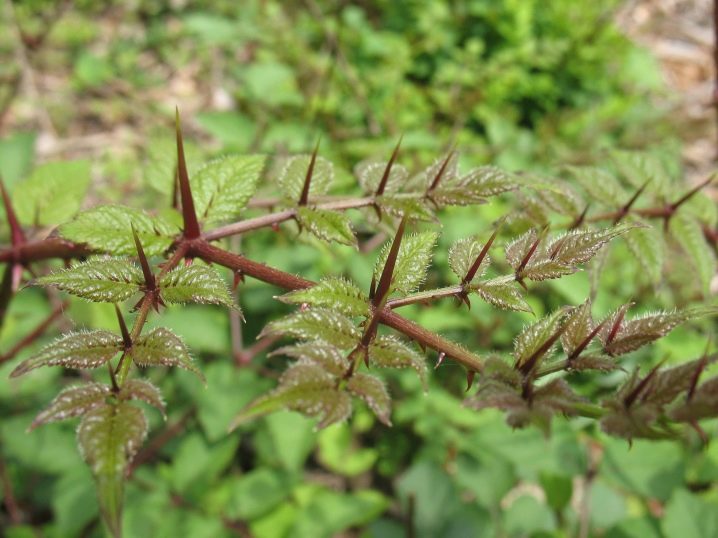
Aralia High is represented by several varieties that are often used in landscape design: pyramidalis, Variegata, subinermis, Aureo-variegata, canescens.
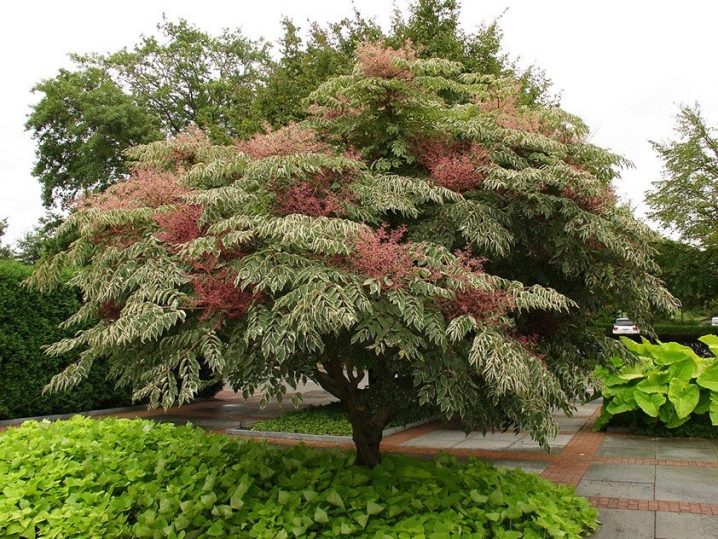
Aralia Continental - a herbaceous plant up to 1 meter high. Grows in the Far East in the form of shrub thickets. It is used in traditional medicine.

Japanese fatsia or indoor aralia Is an indoor flower from the family of the same name. She has beautiful, finger-like large leaf plates with a glossy sheen. Several varieties are cultivated at home. Most notable for its decorativeness, varied color of leaf plates.
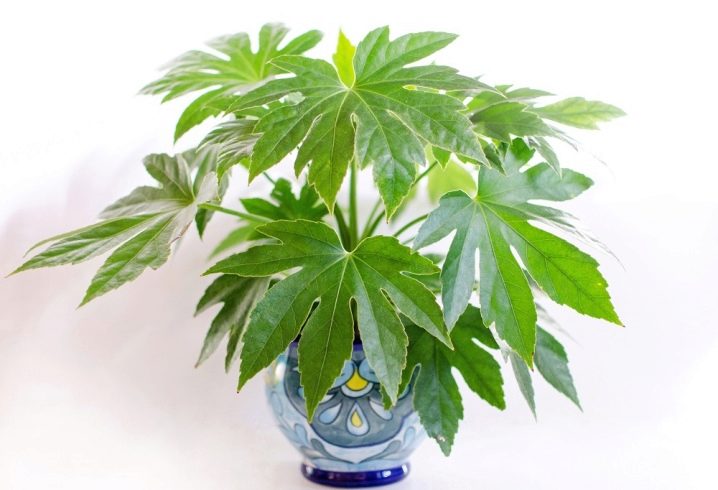
Chinese aralia belongs to deciduous trees, grows up to 8 meters in height. It has a thin, slender trunk with spines and brown bark. The leaves are large, the flowers are numerous, but inconspicuous. Growing places - forest edges and clearings in China.
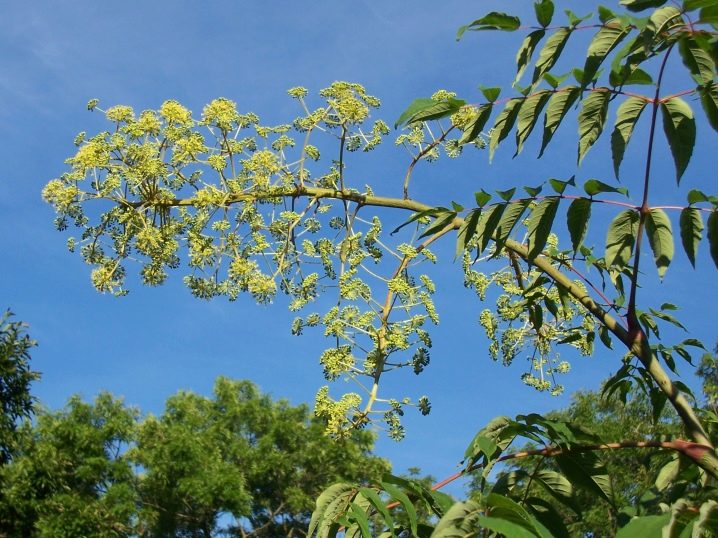
Landing
Planting seedlings can be planned in the spring, when the leaf plates are in the buds, or in the fall, when the foliage has already fallen. A humid area with moderate lighting is perfect for this.
The soil must be pre-dug to the depth of the shovel bayonet at least a week before planting. The planting site should be well cleared of debris and weeds. After that, peat and manure are added in proportions 1: 1, they are dug up again, loosened.
The planting pit should be up to 0.8 meters in diameter, and up to 0.4 meters deep. Fertilization is recommended immediately. The seedling is sent to the middle of the hole, the voids around the edges are carefully covered. After that, the soil around the tree is tamped and watered.
The distance between seedlings should be 3 meters, between rows - 3.5 meters.
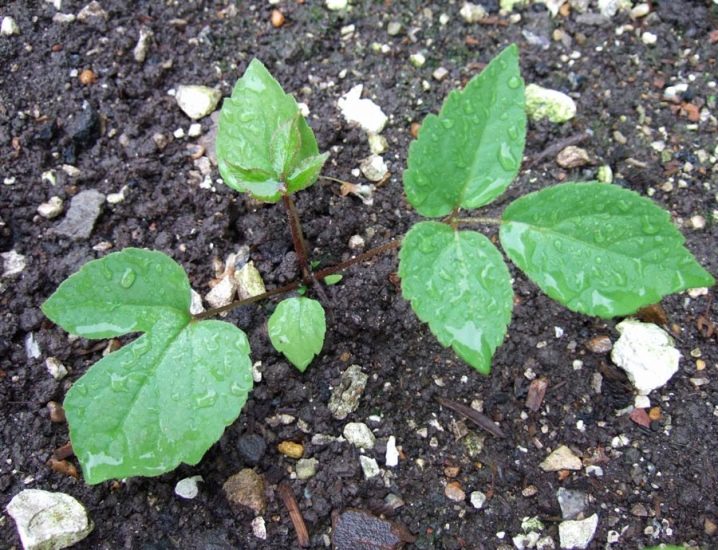
Growing care
There are no difficulties in cultivating shrubs. It is necessary to follow agrotechnical recommendations, especially in the first year of life.
After the seedling was already in the ground, it is better to mulch the trunk circle with peat 2 centimeters thick... So the young growth will take root better, the soil will not freeze in winter, and the optimum humidity will remain in the ground. It should be remembered that the mulch needs to be constantly renewed.
When preparing for winter, it is advisable to cover the plant with a layer of spruce branches, foliage or humus in the first few years, having previously covered it with lutrasil. In winter, it makes sense to carry out snow hilling.

Watering
Watering is infrequent, the need for this arises only during the dry summer. You need to calculate like this: a couple of buckets for each bush.
After watering, when the ground dries up slightly, it is recommended to loosen the near-trunk space. But this work should be done with great care, because the root system is on the surface. Loosening improves air circulation, maintains optimal moisture content, and helps to get rid of weeds and pests.
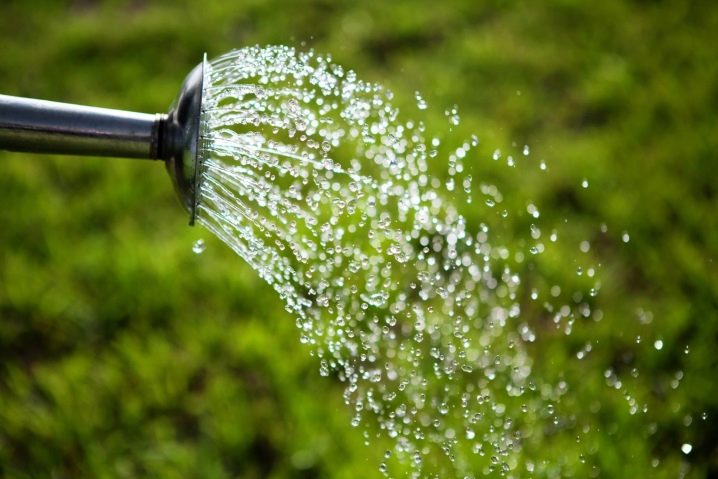
Top dressing
With the onset of spring, at the time of the beginning of sap flow and budding, fertilization with slurry is recommended at the rate of one part of a mullein and eight parts of water.
And also gardeners advise, after adding organic matter, to feed with nitroammophos, following the instructions.
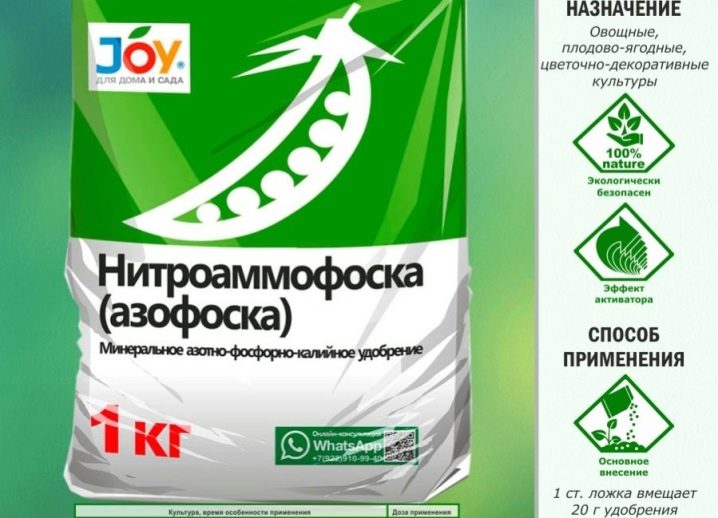
Pruning
Before the greens begin to bloom in the spring, sanitary pruning is carried out in order to get rid of dried, extinct, diseased, damaged bushes.
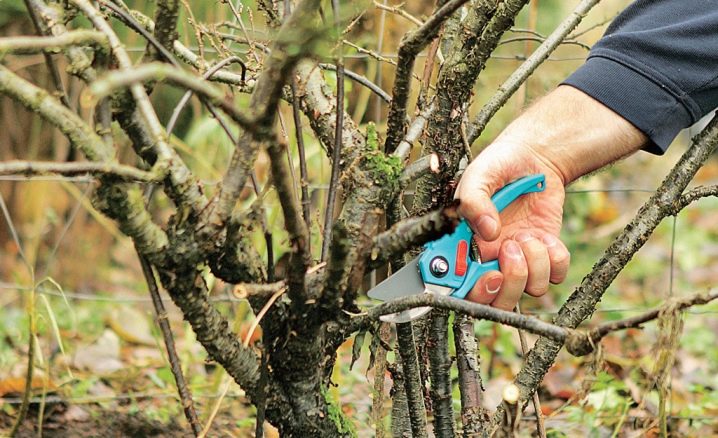
Reproduction
Reproduction in natural conditions occurs with the help of seeds, shoots, offspring and cuttings. But at home, it is possible to propagate aralia with the help of seeds and root suckers.
The seed germinates very slowly, but you need to water it constantly. Seedlings will appear after three years.It is interesting that the seeds remain underdeveloped, and at the time of planting they first ripen in the ground, and then begin to germinate. In addition, the shelf life of seeds does not exceed one and a half years. But if there is still a desire to propagate the culture by seeds, then sowing should take place from the beginning of August to the end of September. The recommended planting depth is 2 centimeters, subject to the seeding rate: one gram of seed per square meter. Maintain a distance of 50 centimeters between holes. Planting with a thin layer of humus.
To activate the seed, we advise you to hold it in a solution of gibberellic acid at the rate of 0.5 grams per liter of water before planting.
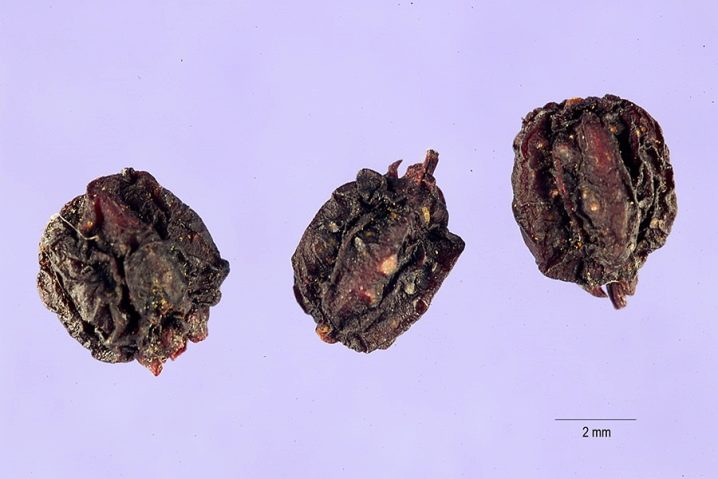
If the planting took place in the spring, then the seeds are best stratified. For up to three months, the seeds are kept at a temperature of +14 degrees and the same at a temperature of +5 degrees. After carrying out such a procedure, seedlings will appear much faster. The calculation should be based on the fact that the spring sowing campaign should take place in April.
The easiest way is to take the root offspring from the plant. The offspring is taken by mid-autumn, when it reaches a height of 25 centimeters. It is necessary to take it carefully, since the young greenery has its own still tender root system. But it can be immediately planted in open ground on a permanent well-prepared site.
Some gardeners practice propagation by cuttings. For such purposes, branches with a stem no more than one centimeter thick are good. They should be cut to a length of no more than 15 centimeters. After collecting the material, they are planted in an area with penumbra in a previously prepared soil. When planting, it is necessary to observe a distance of about 60 centimeters between the cuttings. After planting, a mandatory procedure is watering, mulching, loosening, and removing weeds. After a while, after rooting, transplantation to a permanent place is carried out in the spring until green foliage appears, gradually accustoming to the sun's rays.
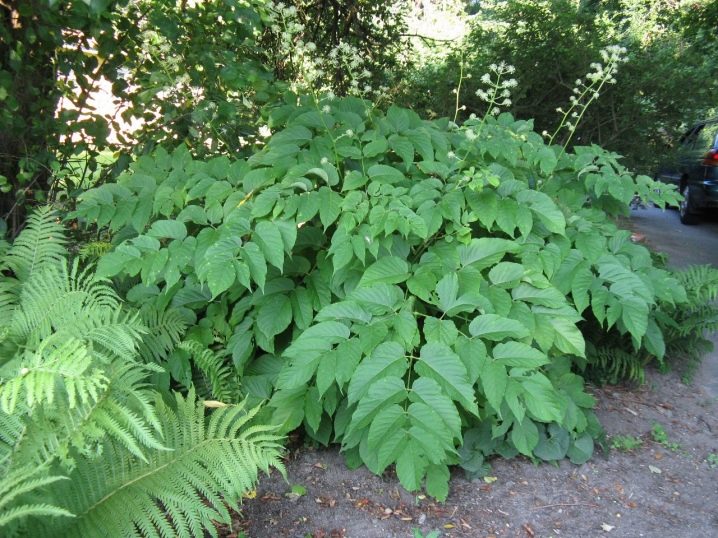
Diseases and pests
Aralia is not susceptible to fungal diseases only if it is properly cultivated and watered.
Bears, May beetle larvae, wireworms pose a great danger. For this reason, it is recommended to thoroughly clean the area of all kinds of debris and insects before planting. For example, it is not easy to get rid of a wireworm if it is wound up. All the necessary activities must be carried out in a complex. You need to put bait, apply green fertilizers, constantly dust the soil with ash.
You can also cope with the larvae of the beetle: we advise you to use insecticides, you need to use nitrogen fertilizers only according to the instructions, and it is also useful to plant white clover plantations next to the plant. Manure traps, coupled with chemicals, will help get rid of the bear. Slugs are dangerous for the plant: it is best to collect them by hand or dig in jars. Sometimes they use saline or soap solution, chemicals.
To prevent abundant parasite infestation, it is necessary to carefully examine the culture three to four times per season.
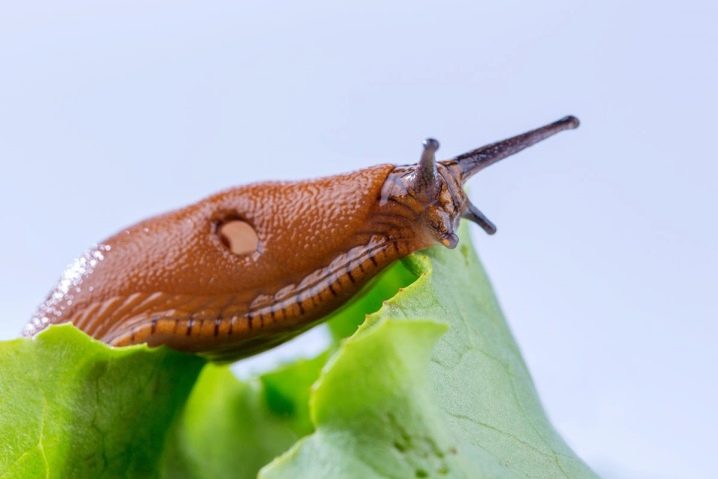
Application in landscape design
Aralia is a rather original and unpretentious plant... It is often used in landscape design. Rapid growth, decorative appearance - all this is a reason to grow an exotic culture for decorative purposes. Its leaf plates are feathery in shape, resembling a palm tree from a distance. The color scheme of the foliage changes depending on the seasons: in the spring - green with a bluish tint, in the summer - emerald color, and in the fall - pink-purple with an orange tint. Flowering is mesmerizing: small buds of white and cream tones are collected in fragrant clusters.

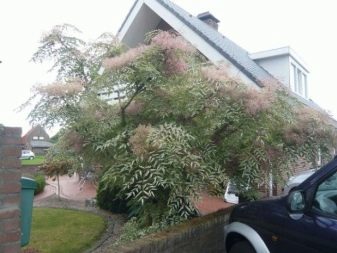
It is planted in a tapeworm, aralia takes root well in group plantings. And also it is irreplaceable when creating a hedge.... Because of its thorny thorns, it is often planted as a fence.Its beauty is undeniable both in the collective planting of the park area, and singly near the buildings.
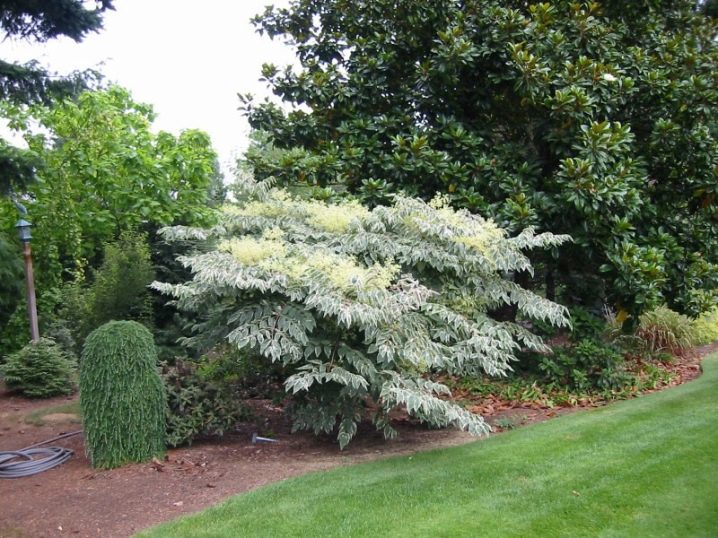
The shrub has medicinal properties. Aralia is beneficial for hypotension and asthenia, impotence, atherosclerosis, fatigue, and some neurological diseases. The plant is used in various forms: powders, tinctures, dried, in ointments, decoctions, in combination with other medicines, but only after talking with a doctor.
Aralia has long settled in Russian parks and squares, in the summer cottages of experienced gardeners and healthy lifestyle lovers. It will not be difficult to grow it. It is only necessary to get rid of insects harmful to her.
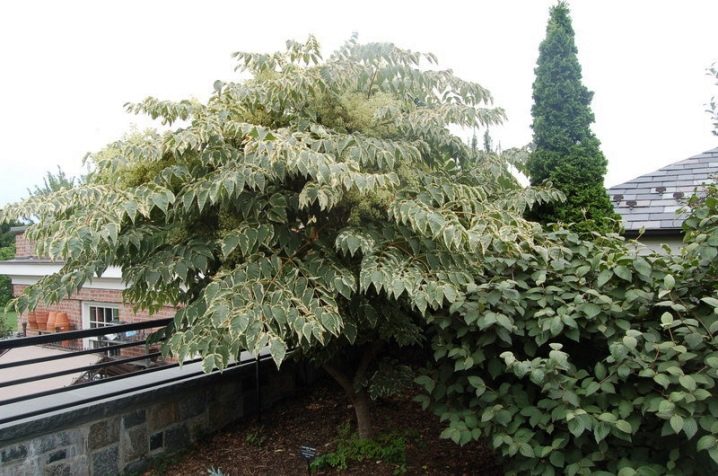



































































The comment was sent successfully.